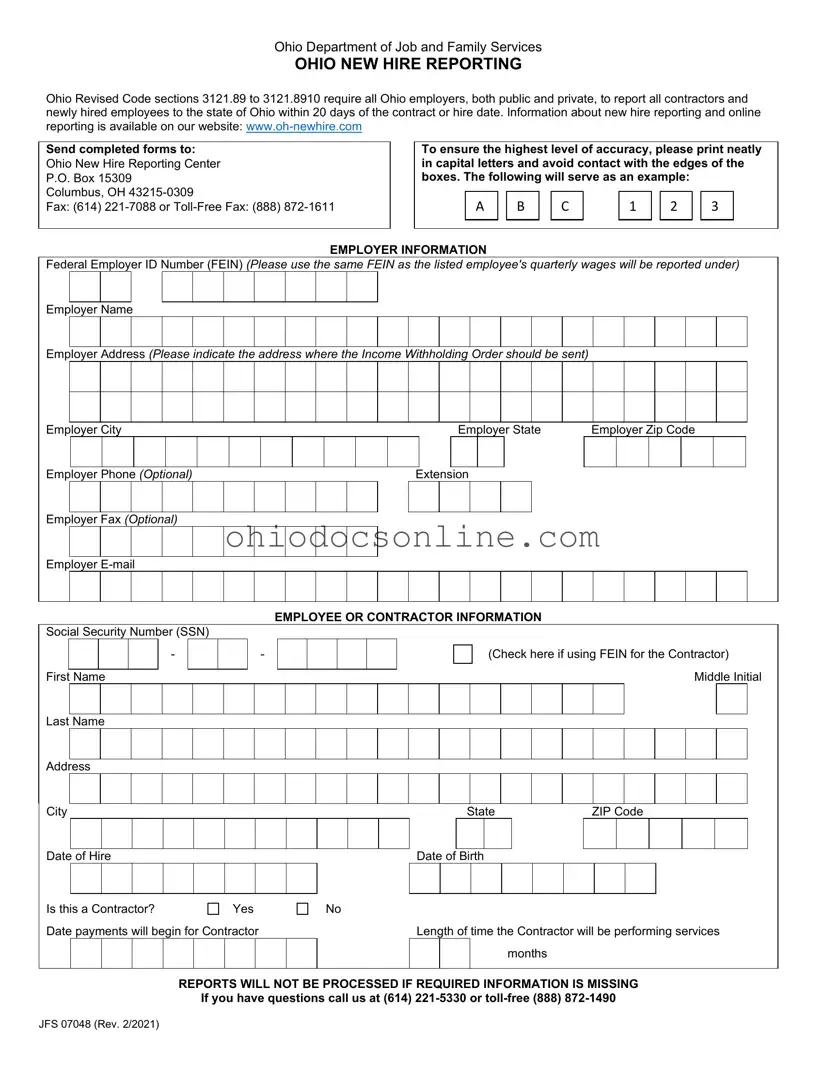Ohio New Hire Reporting Template in PDF
The Ohio New Hire Reporting form is a document that employers in Ohio must complete to report newly hired employees and contractors to the state. According to Ohio law, this report must be submitted within 20 days of hiring or contracting. This process helps ensure compliance with state regulations and aids in tracking employment for various purposes.
Open Editor
